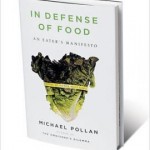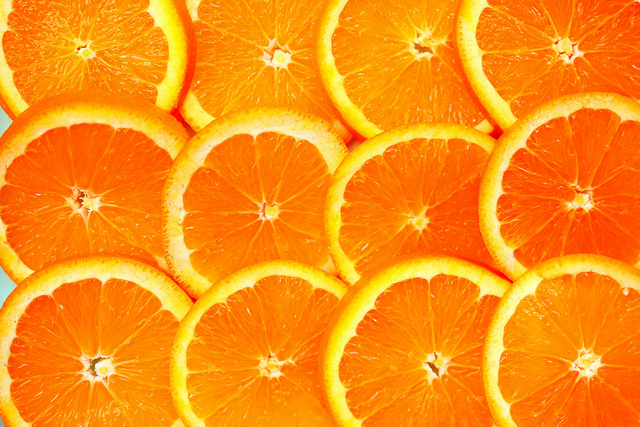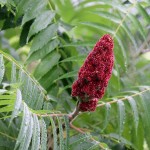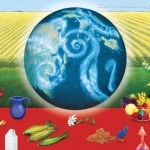Archive for May, 2011
Written by Melanie Kozlan, Four Green Steps.com
Finding yourself inexplicably gloomy or a little depressed from the miserable weather? Feeling down might be an indicator that you’re missing out on essential mood-boosting nutrients. Here’s a list of healthy foods proven to make you feel instantly happier:
Tryptophan-Rich Foods
Tryptophan is one of the ten essential amino acids and helps our brains produce serotonin, which makes us feel relaxed and in control. Food that has tryptophan can help fight depression, insomnia and anxiety. Foods containing tryptophan include:
- Milk (Vegan? Drink hemp milk- hemp seeds contain all ten essential amino acids!)
- Cashews
- Sunflower Seeds
- Pumpkin Seeds
- Bananas
- Avocados
*For the full effect of tryptophan it is best to eat these items uncooked.
Fruits rich in Antioxidants & Vitamin C
Fruit like blueberries and oranges are known to contain a high amount of antioxidants and vitamin C, both are helpful for reducing feelings of stress.
Vegetables Rich in Antioxidants & Folic Acid
Spinach, broccoli and kale are full of folic acid which help produce serotonin (just like tryptophan does).
Chocolate
Contains anadamine, a chemical naturally found in the brain that is know to brighten our mood and make us feel happier. Enjoy in moderation as the sugar in chocolate might contribute to other issues.
Nuts
Nuts are rich in minerals, protein and omega-3 fats. Omega-3 is not only good for both your heart and brain, large doses of it have been used to treat clinical depression. Nuts also contain vitamin E, an antioxidant that combats stress. Brazilian nuts such as cashews, almonds and pistachios have been proven to lower blood pressure and calm our nervous system.
Melanie Kozlan is the Senior Content Director of Four Green Steps
– your one-stop destination for all things green! Four Green Steps is home to the World’s largest Green marketplace, offering an eco-friendly alternative to virtually everything as well as a free ecological curriculum used by students from all around the globe.

In Defense of Food – An Eater’s Manifesto
By Michael Pollan
It’s hard to know where to start with this book review. Pollan touches on so much; the term “manifesto” in the title is no understatement. And yet throughout the twists and turns that explore our perceptions of and our relation to food, Pollan always remains squarely focused on his one, simple, yet surprisingly challenging credo:
Eat food. Not too much. Mostly plants.
Pollan begins with the demise of Mom as controller, boss and decision-maker over the evening meal. When we as a society replaced Mom’s authority over our food choices with advice from scientists and food marketers, we all began to suffer. After all, who really had our best interest at heart?
For decades now, big agriculture has focused on growing produce with synthetic chemicals and raising livestock on pharmaceuticals. The goal is return, quantity and profit. The side effect of this is that our food has been transformed from something we could identify (…grape, …cow) and eat without worry, to the confusingly refined, enriched and modified cacophony of chemicals that we call food today.
To help us understand these food-like substances, we have turned to the professionals for guidance—government food guides, dieticians, nutritionists, trainers and celebrities (who learned from nutritionists and trainers). And so we learned about nutrients and micronutrients, and now we worry over vitamin D, anti-oxidants and essential fatty acids.
Pollan uses the term nutritionism to describe this focus on nutrients and our tendency to break our food down into its parts. He asks his readers to return to seeing food as something that is whole in itself, not a series of parts. Eat an apple not because it contains vitamin C and a nice mix of soluble and insoluble fibre, but because apples are good for you and we know this from millennia of eating them.
With food science in its infancy, Pollan suggest we revert our trust to our traditional food knowledge. The eating habits of our grandparents and ancestors allowed them to survive because the methods were tried and true. The diversity of traditional diets (Greek, French, Japanese, Indian, Mexican, whatever) is proof it’s possible to nourish ourselves from a huge range of different foods—as long as they are food.
In the west, our current dietary focus on processed corn, wheat and soy is a direct result of what’s easy and fast to grow, ship and store. The apparent focus of our agricultural system on quantity over quality, and the goal to produce as many calories per acre as possible, regardless of nutritional value, is leading us down the garden path and straight into the arms of our Western diseases: obesity, diabetes, hypertension, and heart disease.
Instead of chasing elusive super foods to cure our ills, Pollan asks us to re-visit our perception of one of the most basic necessities of life. Is more necessarily better? Are new scientific discoveries more reliable than traditional knowledge? Who really should be deciding what goes into your stomach?
This is, needless to say, a must read.
Thanks to David Newland, of Roots Music Canada, for contributing this post.
With the celebration of springtime fully upon us, many folks are taking this time to count their blessings.
For me, two of the most important ones are food, and music. Both are nourishment: food for the body, music for the soul.
On weekend mornings, I love to head to my local farmer’s market whenever my schedule allows. I take a set amount of money out of the bank, grab my canvas shopping bags and a good strong coffee, and saunter off to browse through the wares.
What I’m looking for, I’ve realized, is not so much the basic sustenance my body needs – I could get that anywhere, and cheaply. The reason I go to the market is that I am seeking nourishment beyond nutrition.
Food that’s locally grown, for example, is important to me. So is being able to have a conversation with the person who produced it. So is knowing as much as I can about what goes into the food, the practices used to grow or raise it, the philosophy of the vendor, and so on.
At my local market, there’s more than food. There are crafts, there are activities for the kids, there’s nature, community, art, and education. Oh – and there’s a girl who plays the fiddle. Throw her a couple of bucks and she stops to thank you. When she’s not there, it feels like something is missing.

And that makes sense. Music and food, these these two basic blessings, share so much in common. Both are easily found – most people reading this post have more food, and more music, than they need. Yet both are frequently found in a form so watered down, the higher value has been lost. You can buy mass-produced music, just as you can buy mass-produced food, and it will perhaps fill your basic entertainment needs.
But the equivalent of a community market is where they both belong.
Mass production is to music as factory farming is to food. Perhaps a necessity, certainly a reality of ordinary life – but not the only way to experience this bounty.
It’s another thing entirely to enjoy music being played live in a decent environment, to shake hands with the artist, to hear your own concerns expressed, to feel your values have been respected, to appreciate the work that goes into making it, and to feel you are working with the artist – just as you might work with a farmer – in partnership around this great sustaining nourishment of the soul.
Music and food, mindfully made, are a natural pair.
Add family and friends and you have all the blessings of a perfect spring holiday weekend.
Here’s hoping you enjoy yours in happiness and health, in body and in spirit.
I’m beginning to realize there is food all around us.
Wild carrots. Wild leeks. Dandelions (of course). Bergamot. Cattails. Wild strawberries. Ostrich fiddle heads. The list goes on.
I had the pleasure of taking a wild edibles* class at Humber College last weekend. It doesn’t get more local than this – just walking around a field or wood, seeing what you find growing there naturally and eating it.
Of course, exactly what we consumed was closely guided by Dave Arama of WSC Survival School, who teaches the class.
The surprising thing was how delicious some of these foraged foods were! I am not kidding. The young needles of the tamarack tree, eaten as a type of candy by native peoples, had me leaving the group and going back for seconds. As for the leaves of the dogtooth violet, I was going for thirds and fourths.
One of my favourite trees, the staghorn sumac, has edible berries that you can eat (similar to a pomegranate, but fuzzy) or make into a type of lemonade (sumac-ade, I suppose).
It was an eye-opener. The tricky part is knowing how to distinguish between your tasty edibles and the poisonous look alikes. For that you either need to commit to the learnin’ or have an expert with you at your side.
Thanks David! It was fun. I’m looking at my surroundings a little differently now and looking forward to the next course on June 4!
*Course title: Edible Plants, An Introduction
A great talk on building healthier restaurants from December 2010.
A film by Deborah Koons Garcia, 2004 (Lily Films)
5 years old but still relevant.
I just saw The Future of Food (2004), a documentary film by Deborah Koons Garcia. This is a noteworthy film from the early days of GMO awareness in the United States. It explores the quiet introduction of GM (genetically modified) foods into our food system. Focusing on the story of BT corn, canola and soy, this interesting little film explores on the plight of the small family farmer vs the likes of Monsanto Inc. We meet Percy Schmeiser, of Saskatchewan, and Rodney Nelson, of North Dakota, two farmers who had the audacity of having Monsanto patented GM seeds blow onto their fields. Their stories are shocking and reveal the pervasiveness of Monsanto’s tentacled reach into the FDA, government policy and legal system.
If you haven’t seen it, definitely worth a watch




